 W
WEstadio 25 de Noviembre is a multi-purpose stadium in Moquegua, Peru. It is currently used by football team San Simón de Moquegua. The stadium holds 21,000 people and was built in 2009. This will be one of the six venues in five cities for the 2019 FIFA U-17 World Cup.
 W
WThe Alto de la Alianza is a historical monument and landmark in the south of Peru, near the city of Tacna, where a crucial battle on May 26, 1880, took place. Bolivian forces in alliance with Peruvian forces battled against the Chilean Army, finally Bolivians retreating to the highlands, and Peruvians forced north, losing strongholds in Arica and Tacna. It is considered a day of regional holiday in Tacna, remembering the day when many Peruvians and Bolivians died defending their country. That day begun a period called 'the captivity of Tacna' that lasted 50 years.
 W
WThe Bab al-Islam Mosque is a mosque in Tacna, Peru. It is accompanied by a formal Islamic School for Muslim children along with the education of latest technologies.
 W
WBelmond Miraflores Park is a 5-star luxury hotel in Lima, Peru. The hotel is located in Miraflores District, along a tree-lined avenue on the Av malecon de la reserva. An observatory lounge is located on the 11th floor, with scenic views of the city. It is also a venue for conferences and wedding receptions. In March 2014 Orient-Express Hotels was renamed Belmond, at which point the hotel changed its name to Belmond Miraflores Park.
 W
WThe Brüning Museum, also known as Museo Regional Arqueológico Enrique Bruning de Lambayeque was inaugurated in 1966 and it is located in two blocks of the principal park in Lambayeque, Peru. It was based on the collections of Hans Heinrich Brüning, a German researcher.
 W
WThe Casa de Correos y Telegrafos is the central post office of the city of Lima, Peru. The building is located in the Historic center of Lima near the Plaza Mayor. The building was constructed in 1897 in a French architectural style. Additionally, the building houses the National Postal and Philatelic Museum. Besides displaying exhibits relating to postal service, the museum showcases exhibits relating to Limean history. The building is located along Piura street and its interior is lined with shops. Its facade contains a clock, and a bronze lion depicted with its snout open and devouring correspondence. The building occupies an area of 6,537 square meters.
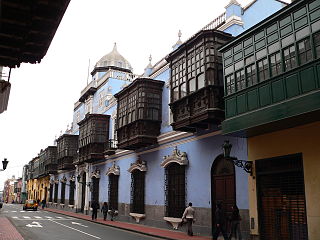 W
WOsambela House is one of the biggest houses built in Lima during the colonial Viceroyalty of Peru period. It is located at Conde de Superunda Street 298, in the historic centre of Lima. It is also called Casa de Oquendo.
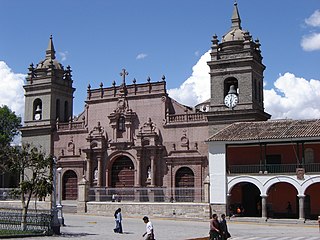 W
WThe Huamanga Cathedral is the main Baroque cathedral in Ayacucho, Peru. It is under the ownership of the Catholic Church and was declared a Historic Cultural Heritage of the Nation of Peru in 1972. It is located in the Plaza de Armas. Its architecture is renaissance baroque. It is built with pink stone in the center and gray stone in the towers. Its construction began in 1632 and ended in 1672. It is considered one of the most beautiful cathedrals in Peru, especially for its interiors decorated with a Churrigueresque style. It is the main and largest temple in Ayacucho.
 W
WThe Chocavento Tower is a high-rise office building located in the San Isidro district of Lima, Peru, built in 2001. At a height of 107 meters, is the third highest building in Peru, surpassed by the "Centro Civico de Lima" at 109 meters, the "Westin Libertador Hotel" at 120 meters and the "Banco Continental (BBVA) Building" at 132 meters. The Chocavento building has 25 storeys above ground and five below ground. Its construction cost US$15.3 million.
 W
WChuluncayani Adventist University, named in Spanish as Universidad Chuluncayani Adventista, is a small private university near the city of Puno on the edge of Lake Titicaca, a major tourist destination of Peru. The university is affiliated with the Seventh-day Adventist Church, being one of two Adventist universities in Peru. It is a part of the Seventh-day Adventist education system, the world's second largest Christian school system.
 W
WColegio Peruano-Alemán Beata Imelda is a German international school in Lurigancho-Chosica, Lima Province, Peru. It serves years 1-12.
 W
WColegio San José Maristas del Callao is a comprehensive school, infant through secondary, in Callao, Peru, in the Lima metropolitan area. It is run by the Marist Brothers who began teaching in the area in 1909. In 2018 the secondary had 10 sections with 307 students.
 W
WCristo del Pacífico, "the Christ of the Pacific", is a 37-metre-high (121 ft) statue of Jesus erected in Lima, Peru, in 2011. Its erection was a gift from a consortium of Brazilian companies to the city of Lima, under former President Alan García, and described as a parting gift to the nation on occasion of his leaving office after the 2011 presidential election. It was inspired by the Christ the Redeemer statue in Rio de Janeiro.
 W
WDeutsche Schule Alexander von Humboldt Lima is a German international school with two campuses in Lima, Peru: one in Miraflores and one in Surco, with a recreational centre in Huampaní. The school serves levels from Kindergarten through Abitur and the Peruvian bachillerato.
 W
WThe Campo de Marte is one of the largest parks in the metropolitan area of Lima, capital city of Peru. Similar in size to Parque de la Exposición and Parque de la Reserva. Campo de Marte originally was part of Exposición and later a horse racetrack, the Hipódromo de Santa Beatriz, in operation from 1903 to 1938. A new racetrack, San Felipe, was built further south in Jesús María ward but the stand was allowed to remain; the track was paved over with asphalt and given the street name Avenida de la Peruanidad. The stand is currently used for spectators watching the Grand Military Parade, done every year on July 29, the day after Independence Day.
 W
WThe Estadio Campeones del 36 is a multi-use stadium in Sullana, Peru. It is used by the football team Alianza Atlético. The stadium holds 12,000 people and was built in 2000. It is a small stadium which was expanded.
 W
WEstadio Campeonísimo is a multi-use stadium in Piura, Peru. It is currently used by football team Atlético Torino. The stadium holds 8,000 people. The stadium also holds Copa Peru matches for some of the local teams in Talara.
 W
WEstadio Ciudad de Cumaná is a multi-purpose stadium in Ayacucho, Huamanga, Peru. It is currently used mostly for football matches and is the home stadium of Ayacucho FC of the Peruvian Primera División and Deportivo Municipal de Huamanga of the Copa Perú league. The stadium holds 12,000 spectators. It was built to commemorate the 150th anniversary of the Battle of Ayacucho by the government of Venezuela under the leadership of Carlos Andrés Pérez. It is named after the city of Cumaná which is the birthplace of Antonio José de Sucre who was the commander of the United Liberation Army during the Battle of Ayacucho. It is part of the larger Complejo Deportivo Venezuela or Venezuela Sports Complex which includes other sporting facilities built by the Venezuelan government.
 W
WEstadio Daniel Alcides Carrión is a multi-use stadium located in Cerro de Pasco, Peru. It is used by football team Unión Minas. The stadium holds 8,000 people and is the highest stadium in the world, with an altitude of 4,380 meters (13,973 ft) above sea level. This makes it very difficult for players who are not used to playing at this height and has caused some controversy.
 W
WEstadio Enrique Torres Belón is a multi-purpose stadium in Puno, Peru. It is currently used by football team Alfonso Ugarte. The stadium is built out of stone and has a capacity of 20,000 people. It is named after Senator Enrique Torres Belón from the Puno Region. The stadium is also the site of the Fiesta de la Candelaria every February.
 W
WEstadio Heraclio Tapia is a multi-purpose stadium in Huánuco, Peru. It is used by football team León de Huánuco. The stadium holds 25,000 people.
 W
WEstadio Héroes de San Ramón is a multi-use stadium in Cajamarca, Peru. It is currently used by football team Club Universidad Técnica de Cajamarca. The stadium seats 18,000 people. The origin of its name comes from the battle of San Pablo, where three students from San Ramón de Cajamarca School died for Perú, in the War of the Pacific. This stadium is undergoing improvements by the Peruvian Institute for Sport.
 W
WEstadio Huancayo is a multi-use stadium in Huancayo, Peru. It is currently used mostly for football matches and is the home of Sport Huancayo and Deportivo Junín. Other teams that previously used the stadium are Deportivo Wanka and Meteor Junin. The stadium holds 20,000 people.
 W
WEstadio IPD de Moyobamba is a multi-use stadium in Moyobamba, Peru. It is currently used mostly for football matches and is the home stadium of Unión Comercio of the Peruvian Primera División. The stadium holds 8,000 spectators. Renovations are expected to start on the stadium which would expand it to hold 20,000 spectators.
 W
WEstadio Juan Maldonado Gamarra is a multi-use stadium in Cutervo Province, Peru. It is currently used mostly for football matches and is the home stadium of Comerciantes Unidos and Los Inseparables de Cutervo of the Copa Perú. The stadium holds 8,000 spectators.
 W
WEstadio Julio Lores Colán is a multi-use stadium in Huaral, Peru. It is currently used by football team Unión Huaral. The stadium holds 10,000 people. The stadium is named for Julio Lores Colán, born in 1908, who was a Peruvian-Mexican football forward who played for Peru in the 1930 FIFA World Cup.
 W
WEstadio Manuel Gómez Arellano was a multi-use stadium in Chimbote. It is no longer used by football team José Gálvez FBC. The stadium held 15,000 people. It was replaced by Estadio Olímpico Municipal in 2007.
 W
WThe Estadio Max Augustín is a multi-purpose stadium in Iquitos, Peru. It is the home ground of the football (soccer) team Colegio Nacional Iquitos and several other Copa Perú teams from Iquitos and the surrounding region. The stadium holds 24,576 people. It was built in 1942 and renovated in 2005. The stadium has artificial turf, an artificial running track, and was a venue in the 2005 FIFA U-17 World Championship
 W
WEstadio Miguel Grau is a multi-use stadium in the Bellavista District of Callao, Peru. The stadium is part of the Sport Village of Callao or Yahuar Huaca, which is owned by the Callao Regional Government since 2011. Its use is available to several football teams in the region including Sport Boys, Universidad de San Martín and Academia Cantolao who play their home matches here for the Torneo Descentralizado. The stadium's maximum capacity is 17,000 and was inaugurated on 16 June 1996 with a match between Sport Boys and Deportivo Pesquero for the 1996 Torneo Descentralizado. The match was a 3–1 win for Sport Boys. Floodlight towers were installed in 2003.
 W
WEstadio Rosas Pampa is a stadium in Huaraz, Peru. It is currently used by the football team Sport Áncash and Sport Rosario. The stadium's capacity is 18,000. Club Deportivo Municipal also played its games here until 1999 when they were relegated.
 W
WFederico Villarreal National University is a public university located in Lima, Peru. It was created by Order Nº 14692 on October 30, 1963.
 W
WGoyeneche Palace or Casa Goyeneche is a 17th-century manorial house in the city of Arequipa, Peru. It attracts tourists interested in observing colonial architecture in Peru. Located on La Merced street, the house looks much the same as other manorial houses of those times. It has ample patios, arched ceilings, doors and windows in typical colonial baroque style as well as a balcony.
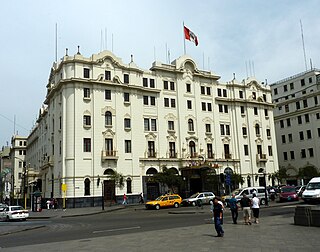 W
WThe Gran Hotel Bolívar, is a historic hotel located on Plaza San Martín in Lima, Peru. Designed by noted Peruvian architect Rafael Marquina, it was built in 1924 and was the first large, modern hotel built in Lima.
 W
WThe Inca Bridge or Inka Bridge refers to one of two places related to access to Machu Picchu, in Peru.
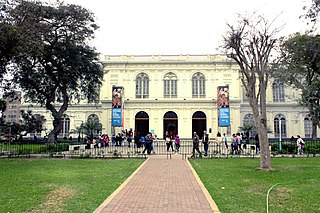 W
WThe Lima Art Museum is an art museum in Lima, Peru. The museum is located in the Palacio de la Exposición. The museum was inaugurated in 1961. The collection includes ceramics and textiles. MALI is a private organization supported by admission fees, contributions from members, and private donations.
 W
WThe Lima Stock Exchange is the stock exchange of Peru, located in the capital Lima. It has several indices. The S&P/BVL Peru General Index is a value-weighted index that tracks the performance of the largest and most frequently traded stocks on the Lima Exchange.
 W
WEstadio Miguel Grau is a multi-use stadium in Piura, Peru, built in 1958. It is currently used by football team Atlético Grau. Throughout the years the stadium has undergone many renovations, most recently for the Copa America 2004. For this international competition, the stadium capacity was raised to 25,500. It was also used to host several games in the 2005 FIFA U-17 World Championship, in which artificial turf and a new electronic scoreboard were installed.
 W
WThe Museo Nacional de Arqueología Antropología e Historia del Perú is the largest and oldest museum in Peru, located on Plaza Bolívar in the Pueblo Libre district of Lima. The museum houses more than 100,000 artifacts spanning the entire history of human occupation in what is now Peru. Highlights include the Raimondi Stele and the Tello Obelisk from Chavín de Huantar, and an impressive scale model of the Incan citadel, Machu Picchu.
 W
WThe Museo de la Nación is one of two major museums of Peruvian history in Lima, Peru. It is much larger than the other main museum in Lima, the Peruvian National Museum of Archaeology, Anthropology, and History. Currently it is no longer being used as a museum, carrying only very esporadical exhibitions.
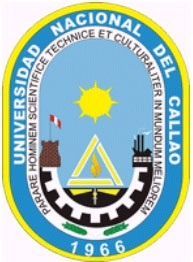 W
WThe National University of Callao is a post-secondary institution in the Bellavista District of the Constitutional Province of Callao in the country of Peru. It was established on 2 September 1966.
 W
WThe National University of Education Enrique Guzmán y Valle, often called La Cantuta, is a university in the Lima area of Peru. The university specializes in education and administration.
 W
WThe National University of Saint Anthony the Abad in Cuzco (UNSAAC), also known as Saint Anthony University of Cusco or University of Cusco, is a public university in Cusco, Peru and one of the oldest in the country. Its foundation was first proposed on March 1, 1692, at the urging and support of Pope Innocent XII. The document in which Pope Innocent XII sponsored the founding of the university was signed in Madrid, Spain by King Charles II on June 1, 1692, thus becoming Cusco's principal and oldest university. The university was authorized to confer the bachelors, licentiate, masters, and doctorate degrees.
 W
WThe National University of Saint Agustine, known locally as Universidad Nacional de San Agustín (UNSA) is a state-owned university in Arequipa, Peru. The UNSA is one of the oldest public universities in Peru and it has been in continuous operation since its founding on November 11, 1828. The National University of Saint Agustine has been consistently ranked as one of the top public schools in Peru.
 W
WThe National University Toribio Rodríguez de Mendoza (UNTRM) is a state-owned university in Chachapoyas, Peru. The UNTRM was founded on September 18, 2000.
 W
WThe Palace of Justice is the seat of the Supreme Court of Peru. It is located in the Lima District of the city of Lima, capital of Peru. Construction started during the second government of Augusto B. Leguía (1919–1930) and finished under the presidency of Óscar R. Benavides, who inaugurated the building in the late 1930s. The Palace was built in a neoclassical style as its plans were based on those of the Law Courts of Brussels, Belgium, work of Joseph Poelaert. However, it lacks the dome of its Belgian counterpart and it is significantly smaller.
 W
WThe Universidad de Piura (UDEP) is a private university in Peru. It has two campuses, the main one is in Piura, while a more recently built one is located in the Miraflores District of Lima.
 W
WThe Plaza Bolivar is also known as the Plaza of Congress or Plaza of the Inquisition as it is surrounded by the Legislative Palace which is the seat of the Congress of Peru, and the site of the former Tribunal of the Inquisition. It is located in the Barrios Altos neighborhood of the Historic Center of Lima, the capital of Peru. It is located at the second block of Abancay avenue, three blocks east of the Plaza Mayor of Lima.
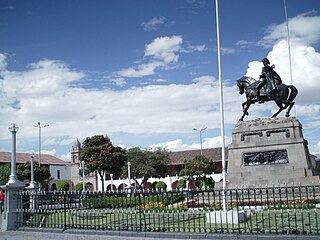 W
WThe Plaza de Armas of Ayacucho is in the city center of Ayacucho, Peru. Central plazas in Peru are typically called the Plaza Mayor. The Plaza de Armas is so named because it was the place where the city's defenders assembled during emergencies. In Ayacucho it is known as Sucre Park.
 W
WThe May 2nd Square is a square located in the historic center of Lima.
 W
WNorthern Private University is a private university located in Trujillo, Peru. It was established by the Peruvian Congress Law N° 26275, on November the 5th, 1993. The academic activities in the University began on August the 15th, 1994. The Northern Private University has four campuses in Trujillo and Cajamarca and Lima respectively. Today, the University has about 10,000 students enrolled in undergraduate study programs, along with the undergraduate programs, the Northern Private University offers postgraduate programs as well. Since September 15, 2007, it has become a member of Laureate International Universities.
 W
WPuente de Piedra, is a bridge in Lima, Peru in South America. It was built in 1608 by the architect Juan del Corral to link Lima with Rímac.
 W
WThe Royal Tombs of Sipán Museum is a museum in Lambayeque, Peru. It contains most of the important artifacts found at Huaca Rajada by archeologist Walter Alva in 1987, including the Lord of Sipán and his entourage. The museum was inaugurated in 2002. The museum was designed to resemble the ancient Moche tombs.
 W
WThe San Cristóbal of Huamanga National University is a public university located in the city of Ayacucho in southern Peru.
 W
WThe Sicán National Museum is a museum in Ferreñafe, Peru, which opened in 2004.
 W
WTacna Cathedral is a church located in the center of the city of Tacna, Peru.
 W
WThe Teatro Municipal de Lima is a theatre and concert hall in Lima, Peru. It is home to the National Symphony Orchestra of Peru. The building was inaugurated in 1920 under the name of "Teatro Forero". It was later bought by the "Municipalidad Metropolitana de Lima" in 1929 and renamed "Teatro Municipal". It was partially destroyed by in 1998, and while the building was sporadically open for special performances; it remained unrestored for 12 years.
 W
WThe Teatro Peruano Japonés is a theatre in Lima, Peru. It is located at the headquarters of Asociación Peruano Japonesa, a nonprofit organization for Peruvians of Japanese origin.
 W
WThe Teatro Manuel Ascencio Segura is a theatre and concert hall in Lima, Peru. First built in 1615, it is considered the oldest theatre in Latin America.
 W
WUniversidad Privada San Juan Bautista is a private university in the city of Lima, Peru. It offers 16 career programs categorized in 4 schools.